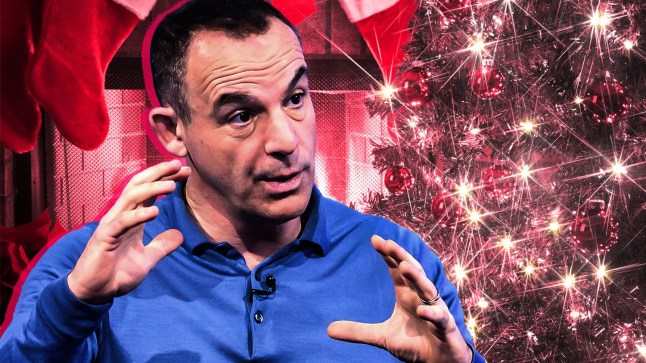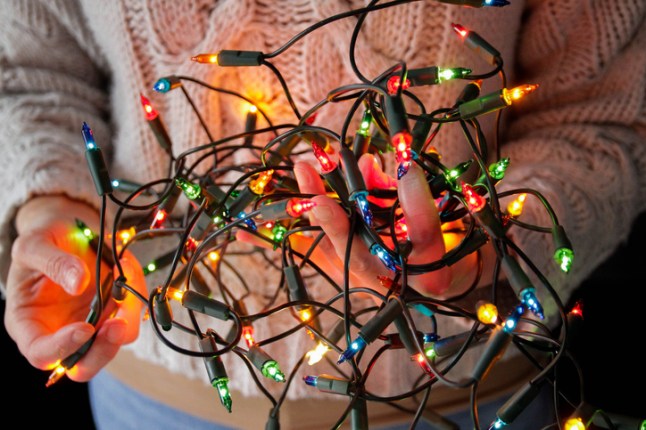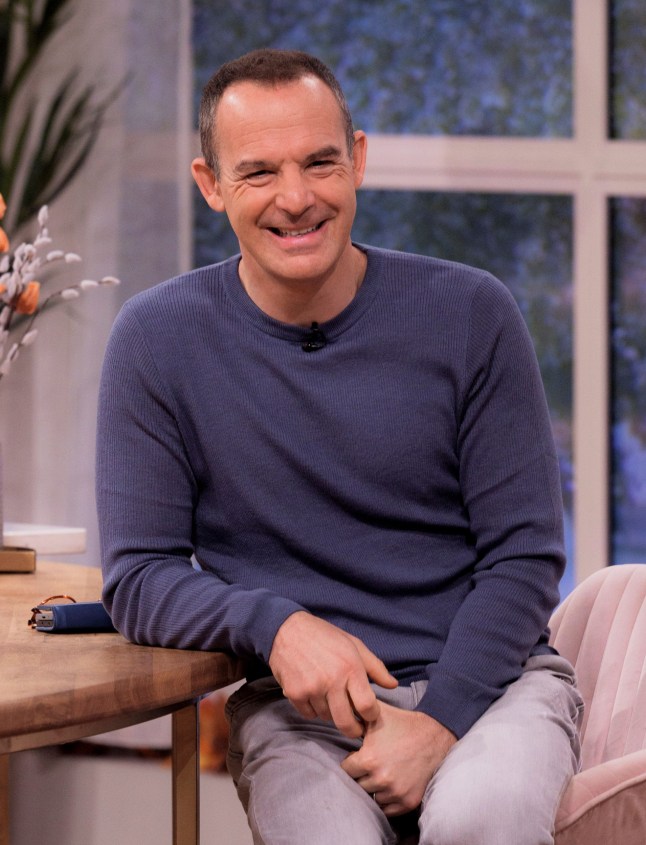
So to help UK households keep costs down but still enjoy the magic of the festive season, Martin Lewis has a handy tip.
Because although your loved ones’ faces as they bask in the glow of twinkly Christmas lights may be priceless, the resulting energy bill can be positively pricey.
In the latest edition of his newsletter, the Money Saving Expert founder revealed how one easy switch can slash the running costs of your Christmas lights by a massive amount.
‘We’ve crunched the numbers to see how much those sparkly lights actually cost,’ says Martin. ‘And the big difference is whether they’re LED lights or incandescent.’
Whereas incandescent lights cost 1p an hour per 100 bulbs, LED lights are far cheaper at around 1p every 12 hours for the same number of bulbs.
Breaking it down, the financial guru continues: ‘If you run a 100-bulb string of LED lights (which uses 3W of energy) for six hours a day for a month it’ll cost roughly 15p.
‘For incandescent bulbs (which use 40W of energy) it’s roughly £1.80. Bigger sets of lights, with more bulbs, would use more energy and cost more.’

To work out your exact running costs, find the wattage for your lights then multiply this by 24.5p — the current electricity Price Cap. Next, multiply the number of hours you plan to have them on and divide by 1,000 (since there are 1,000 watts in a kilowatt).
You can usually find the wattage on the packaging for your lights, but if you’ve chucked the box, there’s another way to check whether you’ve got LED or the more expensive incandescent.
‘Check if the bulbs are glass or plastic,’ the MSE newsletter explains. ‘Incandescent lights are usually made of glass and get hot when they’ve been left on for a while. You may also be able to see a filament inside. LEDs are generally made of plastic and are cool to touch.’
The potential savings all depend on the number of lights you have and how long you have them on, but hold your horses before throw out all your decorations.
Martin highlights that while LED is a cheaper option when it comes to energy usage, you still need to factor in the price of replacing older incandescent lights.
He says: ‘You’d likely save in the long-run if you’re planning to use the lights year after year, as LED lights also last a lot longer (up to 50 times) than incandescent bulbs and are cheaper to run.
‘But if you’ve incandescent bulbs, and money’s tight this Christmas, you’re likely better rationing how often you turn the Christmas lights on than shelling out to replace them.’

That’s not the only way to cut your bills this Christmas though. MSE also recommends the following changes, along with plenty more which you can find on its website:
- Keep doors closed. ‘It’ll help keep the heat in, and means your central heating doesn’t have to work as hard,’ advises Martin.
- Line your curtains. If you need new curtains anyway, consider lined ones. If not, you can get your hands on cheap fleece blankets for as little as £2 each and line them yourself to ensure no heat is lost through the windows.
- Hang curtains inside. You’ll probably need some basic DIY knowledge to do this, but hanging curtains on interior doors can help stop warmth escaping between rooms.
- Clingfilm your windows. While it may seem strange, ‘putting a sheet of clingfilm on your windows can trap a small layer of air’ as a kind of homemade draught excluder. This is best suited for those with single glazed windows, and you can use any transparent and airtight material.
- Invest in an energy monitor. For around £15, an energy monitor cangive you information on how much electricity an appliance uses, and is worthwhile if you want to keep track.
- Let the sun shine in. During the day, make sure you open your curtains and blinds to make the most of the sun’s warmth. Just remember to close them again when it gets dark.
Each of these changes on their own are unlikely to make a huge amount of difference to your spending. When combined, however, they definitely can.
Who said you have to wait until January to get into better habits?
Do you have a story to share?
Get in touch by emailing MetroLifestyleTeam@Metro.co.uk.